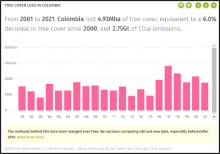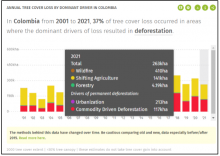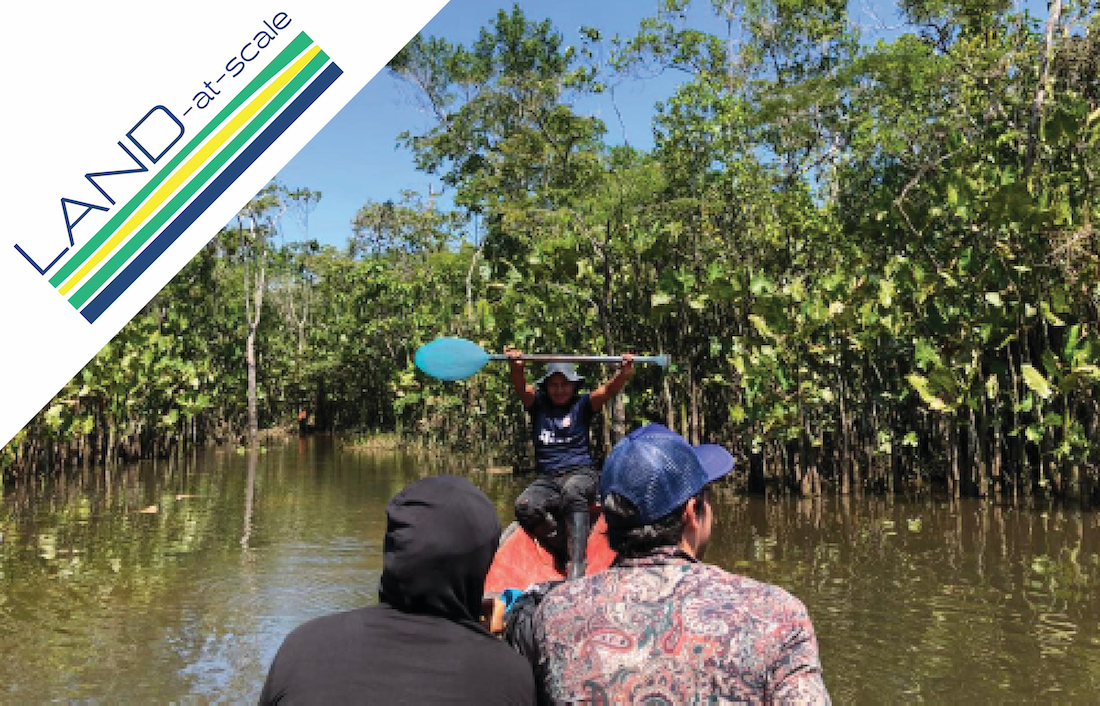From 6-18 November, Egypt hosts the COP27 Climate Summit. This year marks the 30th anniversary of the adoption of the UN Framework Convention on Climate Change. Despite this long trajectory and the progress made, climate change has increasingly severe effects across the world. The LAND-at-scale program acknowledges the central role of climate change. In a short series of blogs, the knowledge management team highlights the diverse impact that climate change has on communities across the world, and how LAND-at-scale projects contribute to adaptation and mitigation measures on the ground. In this blog we talk to Maria-Clara van der Hammen, who has worked with indigenous communities in Colombia for many years with Tropenbos, one of the LAND-at-scale partners in Colombia. For the moment the project is being applied with Koreguaje and Macaguaje communities in the Colombian Amazon region who live mainly from slash and burn agriculture, fishing and hunting and the commercialization in small amounts of agricultural and forest products. The other partners are the Arhuaco people of the Sierra Nevada of Santa Marta, specifically of the Aracataca River basin. They live mainly of subsistence agriculture of various crops depending on the elevation, and therefore climate, as the basin goes from the glaciers more than 4000-meter altitude to sea level. They have small plots with commercial crops, especially coffee but also some sugarcane and cocoa.
LAND-at-scale in Colombia works specifically with indigenous communities. How does climate change affect these communities?
Indigenous people have detailed knowledge of the rhythms of nature, safeguarded in what they have called their “ecological and cultural calendars”. The shamans are the ones in charge to control climate. The knowledge of these calendars allows them to notice all kind of changes, and some elders have indicated that climate no longer responds to their spells. Generally, they say that the cycles of the forest are altered and therefore the way they can use the forest resources. The most evident changes are felt with slash and burn cultivation as the predictability as to when to burn, plant and harvest is no longer there. This is impacting the availability of food sources for the families, negatively impacting nutrition and wellbeing.
Another problem indigenous women are pointing out is the temperature during the day which is felt as much hotter. Women have been adapting their daily work schedule and now they see themselves forced to go to their plots very early in the morning, even before sunrise so that they can return before ten o’clock in the morning. This has reduced the possibilities to take their children with them, and therefore there are less opportunities to transmit their knowledge to the next generation in a practical way as they used to do: teaching by doing.
How does the LAND-at-scale intervention address the topic of climate change for these indigenous communities?
In the Colombian LAND-at-scale program we try to combine improving land tenure security, economic empowerment and environmental sustainability. As part of the discussions with the local communities we have been reconstructing these ecological calendars in relation to the productive cycle, and we are collaborating in the restoration of degraded areas. LAND-at-scale also works in an area in the Sierra Nevada, where we assist indigenous families in documenting how agricultural practices and land occupation is beneficial to conservation. These families arrived 15 years ago and occupied farms deforested by peasants. Through the use of aerial photographs and detailing stories of indigenous families we can visualize how the indigenous way of land use contributes to the restoration of this degraded land. Through this method, we can verify how much land is used by the communities and how much land is left to nature. A second strategy through which LAND-at-scale addresses climate change is exploring how to improve the management of certain species like the milpeso palm (Oenocarpus bataua)
Our partner ICCO promotes the improvement of the quality and quantity of palm oil from this tree in a sustainable manner. At the moment, some members of the communities cut the trees to harvest the fruits, and ICCO is trying to find a way in which they can cut the fruits without cutting the trees. An important finding from our interactions with them is that although they are interested in economic opportunities from their land, they stress the importance of being able to maintain their natural resources.
At the COP26 in Glasgow, countries pledged to halt forest loss, and acknowledged the important role of indigenous communities in addressing and responding to climate change. How do you see this play out on the ground?
Data from Global Forest Watch indicate that shifting agriculture (temporary deforestation) and commodity driven deforestation (permanent forest loss) are the main causes of deforestation. In the Amazon area where we work, we observe that the main drivers behind deforestation are processes of land grabbing, through livestock farming and illegal coca plantations. We know that indigenous ownership of the land halts deforestation as their way of using the environment is much more harmonic with nature. Global data show that the best forest cover coincides with indigenous territories. In Colombia there are many voices asking to recognize these territories as conservation areas besides the already established categories of protected areas. LAND-at-scale assists indigenous communities in registering their territories in line with the rights given to them in the Colombian constitution which recognises ‘resguardos’ as communal territories governed by indigenous communities, and ‘Consejo Comunal’, where Afro-Colombian communities have autonomy to govern communal land.


Figure 1: Tree cover loss in Colombia 2001-2021 and dominant driver[1]
Source: Global Forest Watch (https://gfw.global/3D4tmWA accessed 27 Oct 2022)
The international carbon market offers opportunities for indigenous communities to diversify their livelihoods from the forest. What is the position of the communities you work with on these economic mechanisms?
Communities are seeking for these kind of environmental payments. Two of the three areas where we work are directly involved in exploring processes related to carbon credits. But we, and the communities, are aware of the risks of such projects to the local community, as has been experienced by for example the Sikuani[2], and recently in the Pirá Paraná communities[3]. It will be very important to put interesting mechanisms in place that have benefit sharing within these communities at the core. These benefits must assure that they can finance their own life plans and ethno-development plans, without creating chaos and internal conflicts.
What is the main outcome you want to see from the upcoming COP27 and why?
Important is to see concrete steps towards the recognition of the contribution of indigenous people to forest conservation. Also, guidelines to assure that carbon credits will be implemented to the benefit of indigenous communities, would be helpful. These guidelines should place specific emphasis on the inclusion of women and youth. And this leads me to a third point that COP27 should result in, namely an explicit recognition of the important role of indigenous women in biodiversity conservation.

